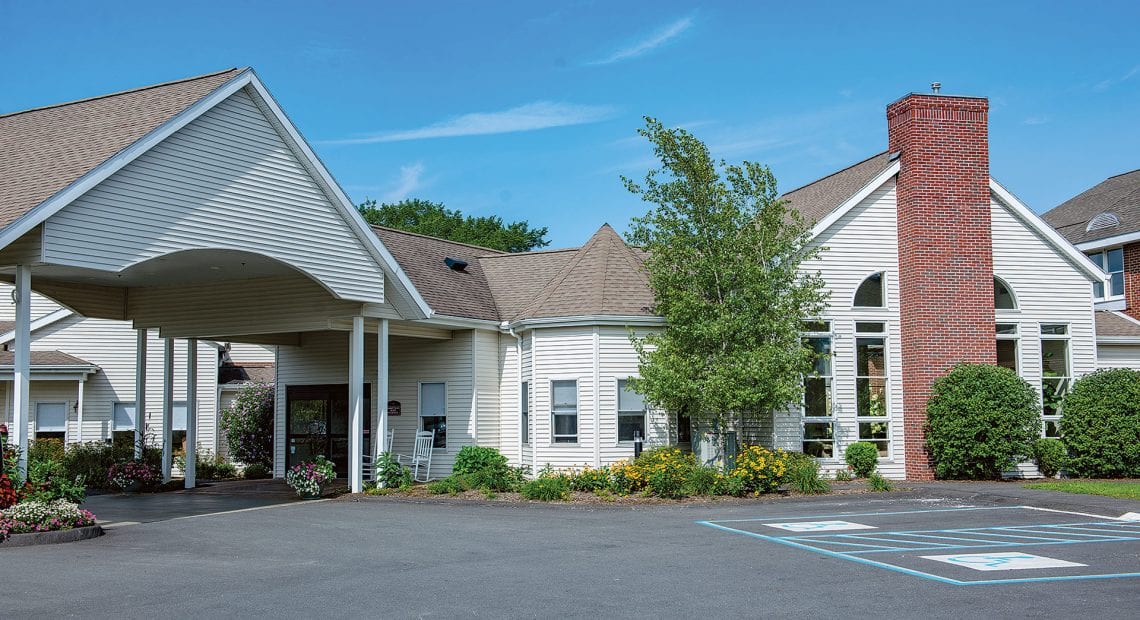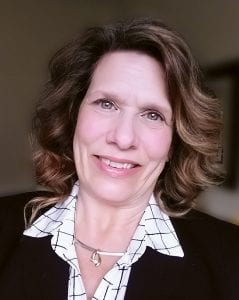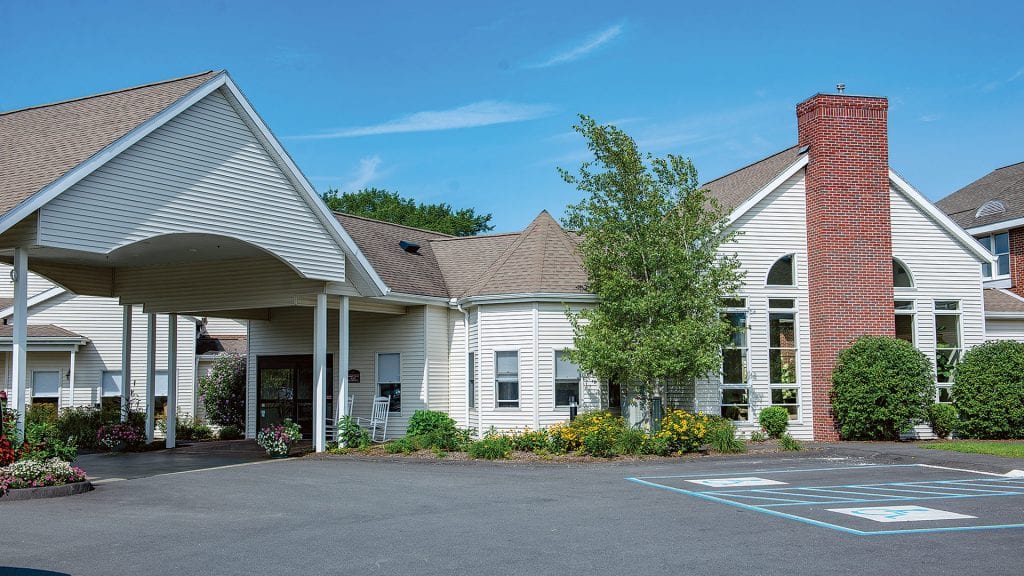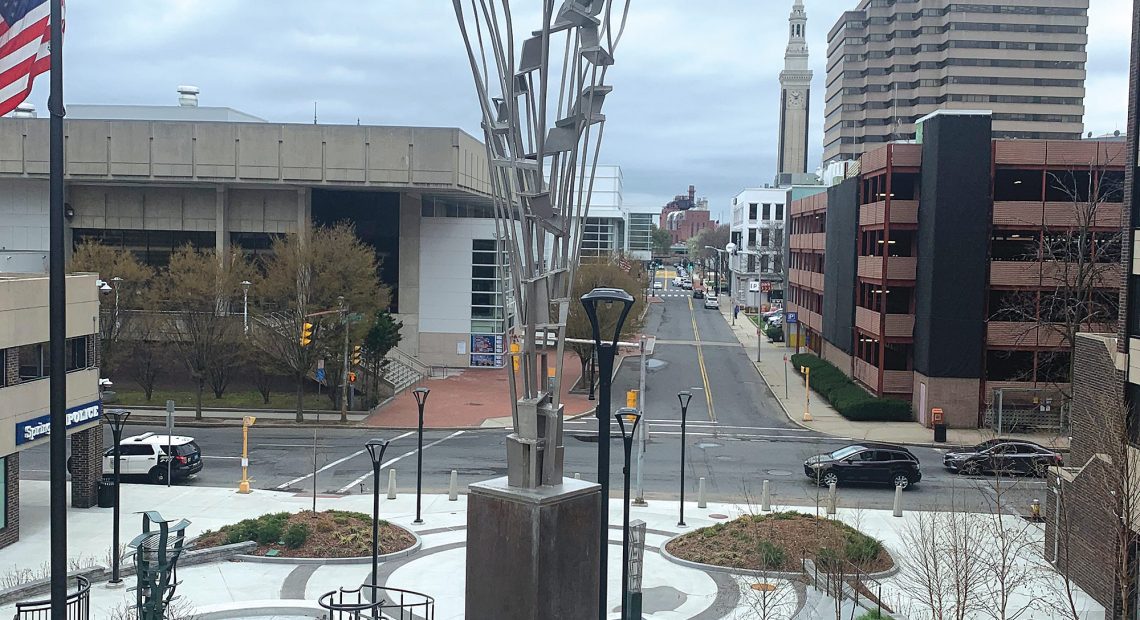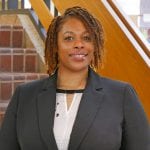The following real estate transactions (latest available) were compiled by Banker & Tradesman and are published as they were received. Only transactions exceeding $115,000 are listed. Buyer and seller fields contain only the first name listed on the deed.
FRANKLIN COUNTY
BERNARDSTON
379 Fox Hill Road
Bernardston, MA 01337
Amount: $229,000
Buyer: Mark E. Gilmore
Seller: Leslie J. Stevens
Date: 04/02/21
19 Harwood Dr.
Bernardston, MA 01337
Amount: $125,000
Buyer: Susan Root
Seller: R. Brown TR
Date: 03/31/21
169 Shaw Road
Bernardston, MA 01337
Amount: $220,000
Buyer: William D. Cycz
Seller: Noah Deignan
Date: 03/31/21
BUCKLAND
4 Old State St.
Buckland, MA 01338
Amount: $198,000
Buyer: Laurie L. Laffond
Seller: Christopher D. Davenport
Date: 03/24/21
33 William St.
Buckland, MA 01338
Amount: $210,000
Buyer: Jocelyn O’Shea
Seller: Thomas W. Archer
Date: 04/02/21
CHARLEMONT
495 Mountain Road
Charlemont, MA 01339
Amount: $206,000
Buyer: Nicholas R. Cerveny
Seller: Russell R. Risden
Date: 03/31/21
COLRAIN
411 Jacksonville Road
Colrain, MA 01340
Amount: $236,000
Buyer: Cody Strakose-Griffin
Seller: Jon Sonntag
Date: 03/23/21
DEERFIELD
24 Meadow Wood Dr.
Deerfield, MA 01373
Amount: $315,000
Buyer: Julia Gates-Hartnell
Seller: Eggers INT
Date: 04/01/21
43 Snowberry Circle #A
Deerfield, MA 01342
Amount: $389,900
Buyer: W. A. & June A. Lundin IRT
Seller: Ragus LLC
Date: 03/26/21
43 Snowberry Circle #B
Deerfield, MA 01342
Amount: $324,900
Buyer: John W. Rees INT
Seller: Ragus LLC
Date: 03/26/21
GREENFIELD
26 Champney Road
Greenfield, MA 01301
Amount: $144,000
Buyer: Michael Grover
Seller: Leonard F. Gould
Date: 03/31/21
163 Chapman St.
Greenfield, MA 01301
Amount: $123,985
Buyer: Wells Fargo Bank
Seller: Vanessa Arabia
Date: 03/25/21
294 Country Club Road
Greenfield, MA 01301
Amount: $180,000
Buyer: Danielle C. Loynd
Seller: Caitlin R. Tela
Date: 03/31/21
77 Crescent St.
Greenfield, MA 01301
Amount: $185,000
Buyer: Hugh B. Bales
Seller: Jacqueline A. David
Date: 03/31/21
112 Franklin St.
Greenfield, MA 01301
Amount: $150,000
Buyer: Enoch Jensen
Seller: Ann M. Powers
Date: 04/01/21
82 James St.
Greenfield, MA 01301
Amount: $180,000
Buyer: Camillo Archuleta
Seller: Wayne Garfinkel
Date: 03/29/21
342 Log Plain Road
Greenfield, MA 01301
Amount: $225,000
Buyer: Taylor E. Neal
Seller: Kristin Knoll
Date: 03/26/21
479 Main St.
Greenfield, MA 01301
Amount: $325,000
Buyer: Rikard R. Treiber
Seller: Women In Transition Inc.
Date: 04/01/21
73 Orchard St.
Greenfield, MA 01301
Amount: $749,000
Buyer: Isaac Torrin
Seller: Brian E. Thompson
Date: 04/01/21
51 Thayer Road
Greenfield, MA 01301
Amount: $265,000
Buyer: Christopher Damboise
Seller: Terry L. Gregory
Date: 03/31/21
28-30 Walnut St.
Greenfield, MA 01301
Amount: $190,000
Buyer: Heather F. Stewart
Seller: Karen M. Truehart
Date: 03/31/21
LEVERETT
246 Long Plain Road
Leverett, MA 01054
Amount: $250,000
Buyer: Elsbeth L. Walker
Seller: Herbert, Marjorie P., (Estate)
Date: 03/24/21
LEYDEN
Greenfield Road
Leyden, MA 01301
Amount: $115,000
Buyer: Shawna Pazmino-Brook
Seller: Deloretto, David, (Estate)
Date: 04/02/21
MONTAGUE
Federal St.
Montague, MA 01351
Amount: $120,000
Buyer: Thomas Delvan-Dougan
Seller: James H. Clapp
Date: 03/31/21
472-476 Federal St.
Montague, MA 01351
Amount: $175,000
Buyer: Andrei Taraburca
Seller: Stone, Richard K. Jr., (Estate)
Date: 03/26/21
433 Turners Falls Road
Montague, MA 01351
Amount: $142,000
Buyer: Heather George
Seller: Quinones, Donna D., (Estate)
Date: 03/31/21
450 Turners Falls Road
Montague, MA 01351
Amount: $221,000
Buyer: Jake Curry
Seller: Marion, Edward E., (Estate)
Date: 03/26/21
NEW SALEM
377 Petersham Road
New Salem, MA 01355
Amount: $320,000
Buyer: Todd Lanoue
Seller: David A. Pariseau
Date: 03/26/21
ORANGE
23 Cottage St.
Orange, MA 01364
Amount: $159,575
Buyer: Michael Burch
Seller: Mignonne D. Davis
Date: 03/22/21
75 Daniel Shays Hwy.
Orange, MA 01364
Amount: $192,900
Buyer: John E. Bellar
Seller: Donald W. Knapp
Date: 03/23/21
154 Memory Lane
Orange, MA 01364
Amount: $225,000
Buyer: Derek M. Salmi
Seller: FNMA
Date: 04/01/21
153 Quabbin Blvd.
Orange, MA 01364
Amount: $2,500,000
Buyer: 153 Quabbin Boulevard LLC
Seller: JGC RT
Date: 04/02/21
SHELBURNE
4 Mercy Anderson Road
Shelburne, MA 01370
Amount: $148,000
Buyer: Emily A. Tuthill
Seller: Raymond W. Tuthill
Date: 03/31/21
SHUTESBURY
196 Montague Road
Shutesbury, MA 01072
Amount: $340,000
Buyer: Nora L. Gurley
Seller: Anne M. Kittredge
Date: 03/24/21
WHATELY
1 Sugarloaf St., Ext.
Whately, MA 01373
Amount: $250,000
Buyer: Danielle Paley
Seller: Pamela Smith
Date: 04/01/21
HAMPDEN COUNTY
AGAWAM
62 Center St.
Agawam, MA 01001
Amount: $257,000
Buyer: Margarita Malyshevski
Seller: Vadim Nazarets
Date: 03/29/21
135 Edgewater Road
Agawam, MA 01001
Amount: $485,000
Buyer: Lissette Grimaldi
Seller: James E. Millot
Date: 03/25/21
74 Federal St.
Agawam, MA 01001
Amount: $170,000
Buyer: Fumi Realty Inc.
Seller: Carr, Ronald A., (Estate)
Date: 04/02/21
135 Franklin St.
Agawam, MA 01030
Amount: $260,000
Buyer: Zachary Lebreton
Seller: Edward P. Borgatti
Date: 03/31/21
1744 Main St.
Agawam, MA 01001
Amount: $200,000
Buyer: Anatolie Corja
Seller: Maxcine Cirillo
Date: 03/31/21
981 River Road
Agawam, MA 01001
Amount: $340,000
Buyer: JMAC Realty Corp
Seller: Paul J. Traska
Date: 03/31/21
521 South West St.
Agawam, MA 01030
Amount: $279,000
Buyer: Nicholas L. Damours
Seller: Jessica L. Iacolino
Date: 03/31/21
700 Silver St.
Agawam, MA 01001
Amount: $2,350,000
Buyer: Igloo Cellulose Realties
Seller: Robert A. Fagin
Date: 04/01/21
173 Southwick St.
Agawam, MA 01030
Amount: $750,000
Buyer: Hillside Development Corp.
Seller: Longhi, Alfred J., (Estate)
Date: 03/31/21
1094 Suffield St.
Agawam, MA 01001
Amount: $1,150,000
Buyer: Tiernanoge Properties LLC
Seller: Work Opportunity Center Inc.
Date: 03/29/21
114 Wagon Wheel Dr.
Agawam, MA 01030
Amount: $565,000
Buyer: Zachary Curtin
Seller: Michelle L. Reynolds
Date: 03/31/21
198 Walnut St.
Agawam, MA 01001
Amount: $202,000
Buyer: Lora Feeley
Seller: Louis Bonavita
Date: 04/02/21
215 Valley Brook Road
Agawam, MA 01030
Amount: $300,000
Buyer: Kubra Cayan
Seller: Nurcan Cayan
Date: 03/26/21
BRIMFIELD
50 Dix Hill Road
Brimfield, MA 01010
Amount: $420,000
Buyer: Peter McQueen
Seller: Ryan C. Hurt
Date: 03/30/21
CHESTER
313 Abbott Hill Road
Chester, MA 01011
Amount: $550,000
Buyer: Timothy Hoffmann
Seller: Jeffrey M. Defeo
Date: 03/23/21
26 Taft Road
Chester, MA 01011
Amount: $200,000
Buyer: Dennis L. Nolt
Seller: Henry J. Niemiec
Date: 04/01/21
CHICOPEE
14 Alfred St.
Chicopee, MA 01020
Amount: $170,000
Buyer: Victor G. Burgos
Seller: Bowers, Charles C., (Estate)
Date: 04/01/21
70 Amherst St.
Chicopee, MA 01013
Amount: $132,000
Buyer: Henry J. Niemiec
Seller: Frances S. Taborowski
Date: 04/01/21
42 Bemis St.
Chicopee, MA 01013
Amount: $225,000
Buyer: Kaelyn M. Aponte
Seller: Mario Tedeschi
Date: 03/30/21
45 Chapel St.
Chicopee, MA 01020
Amount: $155,000
Buyer: Steven Cole
Seller: Downie, Katherine D., (Estate)
Date: 03/26/21
1 Clifton St.
Chicopee, MA 01020
Amount: $260,900
Buyer: Jade Elsamahy
Seller: Carl S. Williams
Date: 03/31/21
28 Douglas Circle
Chicopee, MA 01013
Amount: $256,000
Buyer: Matthew T. Hewes
Seller: Suzanne M. Hemby
Date: 03/26/21
211 East St.
Chicopee, MA 01020
Amount: $220,000
Buyer: Raymond O. Rodriguez
Seller: Renee A. Ashey
Date: 03/24/21
690 East Main St.
Chicopee, MA 01020
Amount: $190,000
Buyer: Abdulmaged T. Aljashaami
Seller: Roxanne L. Bean-Riley
Date: 03/23/21
19 Fisher St.
Chicopee, MA 01020
Amount: $265,000
Buyer: Carlton L. Thompson
Seller: Allen M. Caron
Date: 03/26/21
690 Grattan St.
Chicopee, MA 01020
Amount: $250,000
Buyer: Agape Real Estate LLC
Seller: Wai P. Cheng
Date: 03/26/21
24 Henry Harris St.
Chicopee, MA 01013
Amount: $226,000
Buyer: Kevin E. Baker
Seller: Christopher Przybyl
Date: 04/02/21
25 Honey Lane
Chicopee, MA 01020
Amount: $261,000
Buyer: Paul Modelski
Seller: Charmaine Gazda
Date: 03/31/21
23 Jackson St.
Chicopee, MA 01020
Amount: $203,000
Buyer: Jainis J. Colon-Vazquez
Seller: Kristal Hollimon
Date: 03/31/21
46 Leary Ave.
Chicopee, MA 01020
Amount: $240,000
Buyer: Hanna Newberg
Seller: Cory J. Rodgers
Date: 03/24/21
34 Maple St.
Chicopee, MA 01020
Amount: $157,000
Buyer: Kelly VanBuren
Seller: Celestino Montes
Date: 03/24/21
44 McCarthy Ave.
Chicopee, MA 01020
Amount: $210,000
Buyer: Paul J. Leblanc
Seller: James Sabourin
Date: 03/23/21
285 McKinstry Ave.
Chicopee, MA 01013
Amount: $6,553,109
Buyer: ARG NCD5PCK001 LLC
Seller: E&R Realty LLC
Date: 03/31/21
971 McKinstry Ave.
Chicopee, MA 01020
Amount: $275,000
Buyer: Jose Rodriguez-Marrero
Seller: Nadine N. Curtin
Date: 03/31/21
Meadow St.
Chicopee, MA 01020
Amount: $15,110,096
Buyer: ARG NCD5PCK001 LLC
Seller: E&R Realty LLC
Date: 03/31/21
705 Meadow St.
Chicopee, MA 01013
Amount: $15,110,096
Buyer: ARG NCD5PCK001 LLC
Seller: E&R Realty LLC
Date: 03/31/21
725 Meadow St.
Chicopee, MA 01013
Amount: $2,575,800
Buyer: ARG NCD5PCK001 LLC
Seller: E&R Realty LLC
Date: 03/31/21
739 Meadow St.
Chicopee, MA 01013
Amount: $4,503,911
Buyer: ARG NCD5PCK001 LLC
Seller: E&R Realty LLC
Date: 03/31/21
751 Meadow St.
Chicopee, MA 01013
Amount: $4,503,911
Buyer: ARG NCD5PCK001 LLC
Seller: E&R Realty LLC
Date: 03/31/21
30 Mount Royal St.
Chicopee, MA 01020
Amount: $250,000
Buyer: Louis C. Correa
Seller: Nathan R. Alexander
Date: 03/31/21
90 Murphy Lane
Chicopee, MA 01020
Amount: $150,000
Buyer: William Cardinal
Seller: Mary Cardinal
Date: 03/23/21
18 Nash St.
Chicopee, MA 01013
Amount: $230,625
Buyer: Harshman Singh
Seller: Ramon Alvarez
Date: 04/01/21
69 Olea St.
Chicopee, MA 01020
Amount: $275,000
Buyer: Abigail Graffam
Seller: Riverbound Investments Inc.
Date: 03/29/21
90 Quartus St.
Chicopee, MA 01013
Amount: $220,000
Buyer: Joel Maldonado
Seller: Beatriz Agosto
Date: 03/24/21
245 Rolf Ave.
Chicopee, MA 01020
Amount: $287,000
Buyer: Amanda A. Long
Seller: Lisa M. O’Sullivan
Date: 03/31/21
1045 Sheridan St.
Chicopee, MA 01022
Amount: $5,623,439
Buyer: ARG NCD5PCK001 LLC
Seller: E&R Realty LLC
Date: 03/31/21
19 Sherwood St.
Chicopee, MA 01013
Amount: $280,000
Buyer: Christopher M. Stortz
Seller: Diane T. Duval
Date: 03/26/21
405 Springfield St.
Chicopee, MA 01013
Amount: $313,000
Buyer: Mario Rivera
Seller: Lisa Silva
Date: 03/31/21
463 Springfield St.
Chicopee, MA 01013
Amount: $227,190
Buyer: Israel Estrada
Seller: L. A. Conner Inc.
Date: 03/26/21
26 Thaddeus St.
Chicopee, MA 01020
Amount: $246,000
Buyer: Marta L. Zuluaga-Alvarez
Seller: Victor J. Monsalve
Date: 04/01/21
59 Watson St.
Chicopee, MA 01020
Amount: $150,000
Buyer: Raymond Turgeon
Seller: Christopher M. Stortz
Date: 03/26/21
EAST LONGMEADOW
98 Colony Dr.
East Longmeadow, MA 01028
Amount: $369,150
Buyer: Jaime R. Gonzalez
Seller: Emtay Inc.
Date: 04/01/21
7 Dearborn St.
East Longmeadow, MA 01028
Amount: $250,000
Buyer: Timothy Leahy
Seller: Noonan, Joan M., (Estate)
Date: 04/02/21
38 Garland Ave.
East Longmeadow, MA 01028
Amount: $228,700
Buyer: Sydney Slattery
Seller: Terry Peckham
Date: 04/02/21
34 Holland Dr.
East Longmeadow, MA 01028
Amount: $215,000
Buyer: Jonathan D. Maciorowski
Seller: Patricia M. Rhodes
Date: 04/02/21
Jeffery Lane
East Longmeadow, MA 01028
Amount: $157,000
Buyer: Vladimir Kulenok
Seller: Southern NE RE Development Inc.
Date: 03/24/21
48 Moore St.
East Longmeadow, MA 01028
Amount: $261,500
Buyer: Michael White
Seller: Katie A. Miller-Murphy
Date: 04/01/21
14 Oak Bluff Circle
East Longmeadow, MA 01028
Amount: $271,000
Buyer: Michael Ostrander
Seller: Thomas F. Connors
Date: 03/31/21
5 Redin Lane
East Longmeadow, MA 01028
Amount: $347,000
Buyer: Bethany L. Charis-Molling
Seller: Nathan J. Martin
Date: 03/26/21
29 Wellington Dr.
East Longmeadow, MA 01028
Amount: $719,000
Buyer: Robert J. Seer
Seller: Kevin J. Aliengena
Date: 03/31/21
35 Westernview Circle
East Longmeadow, MA 01028
Amount: $339,000
Buyer: April S. Mills
Seller: Jaime E. Cabezas
Date: 03/26/21
HOLYOKE
30 Anderson Ave.
Holyoke, MA 01040
Amount: $256,000
Buyer: Joshua A. Stark
Seller: Rachelle Encarnacion
Date: 03/29/21
177 Bemis Road
Holyoke, MA 01040
Amount: $302,500
Buyer: Donald Stone
Seller: Lawrence W. Preston
Date: 03/22/21
17-1/2 Clark St.
Holyoke, MA 01040
Amount: $209,000
Buyer: Janet Glenn
Seller: Jennie M. Padua
Date: 03/23/21
1020 Dwight St.
Holyoke, MA 01040
Amount: $177,500
Buyer: Heather Messer
Seller: Kori Wilson
Date: 03/31/21
1021 Dwight St.
Holyoke, MA 01040
Amount: $170,000
Buyer: Sarah A. DeAraujo
Seller: Erica L. Pelletier
Date: 04/01/21
1033-R Hampden St.
Holyoke, MA 01040
Amount: $159,900
Buyer: DTA LLC
Seller: Ruby Realty LLC
Date: 03/23/21
598 Hampden St.
Holyoke, MA 01040
Amount: $410,000
Buyer: Blackrock SHM Group LLC
Seller: Holyoke 1 LLC
Date: 03/24/21
820 High St.
Holyoke, MA 01040
Amount: $700,000
Buyer: OM Holyoke RE LLC
Seller: A&A Shell LLC
Date: 03/23/21
17 Holly Meadow Road
Holyoke, MA 01040
Amount: $415,000
Buyer: Noel S. Sherman
Seller: Ryan Hamel
Date: 04/01/21
334 Linden St.
Holyoke, MA 01040
Amount: $172,000
Buyer: Christophe Vaughn-Karney
Seller: Alan Elman
Date: 04/02/21
197 Locust St.
Holyoke, MA 01040
Amount: $155,000
Buyer: Shianne Padilla
Seller: EPB RE Services LLC
Date: 03/22/21
213 Locust St.
Holyoke, MA 01040
Amount: $190,000
Buyer: Shaheen Sutterwala
Seller: David M. Cowan
Date: 03/31/21
25 Portland St.
Holyoke, MA 01040
Amount: $263,000
Buyer: Anthony M. Stanfield
Seller: CIG 4 LLC
Date: 04/01/21
2 River Ter.
Holyoke, MA 01040
Amount: $235,000
Buyer: Zachary Goodwin-Boyd
Seller: Hepburn, Eleanor, (Estate)
Date: 04/02/21
523-525 South Bridge St.
Holyoke, MA 01040
Amount: $230,000
Buyer: Donovan Parker
Seller: Nueva Esperanza Inc.
Date: 03/30/21
11 Steven Dr.
Holyoke, MA 01040
Amount: $163,000
Buyer: Edward Cauley
Seller: Donna M. Gemme
Date: 03/24/21
LONGMEADOW
43 Burbank Road
Longmeadow, MA 01106
Amount: $365,000
Buyer: Danielle Hegarty
Seller: Dennis M. O’Connor
Date: 03/31/21
23 Chestnut Road
Longmeadow, MA 01106
Amount: $185,000
Buyer: Timothy M. Paltz
Seller: Mark W. Grimaldi
Date: 04/02/21
435 Converse St.
Longmeadow, MA 01106
Amount: $417,000
Buyer: Michael Agen
Seller: Michael P. Fritz
Date: 03/31/21
533 Laurel St.
Longmeadow, MA 01106
Amount: $437,000
Buyer: Alena Maple
Seller: Truong Vuong
Date: 04/01/21
144 Lincoln Road
Longmeadow, MA 01106
Amount: $237,700
Buyer: Kings Enterprise LLC
Seller: Christopher Evans
Date: 03/31/21
1399 Longmeadow St.
Longmeadow, MA 01106
Amount: $400,000
Buyer: Christopher R. Fogelstrom
Seller: James O. Humphries
Date: 03/30/21
34 Primrose Dr.
Longmeadow, MA 01106
Amount: $452,000
Buyer: Scott R. Hanson
Seller: Ronald F. Conway
Date: 04/02/21
LUDLOW
603 Alden St.
Ludlow, MA 01056
Amount: $175,000
Buyer: Melissa A. Archer
Seller: Stephen Ecrement
Date: 03/31/21
41 Berkshire St.
Ludlow, MA 01056
Amount: $138,550
Buyer: Steffanie M. Rodrigues
Seller: Charles R. Summers
Date: 03/31/21
339 Chapin St.
Ludlow, MA 01056
Amount: $279,900
Buyer: Prestin J. Torchia
Seller: Andrew Ferrier
Date: 03/26/21
74 Chapin St.
Ludlow, MA 01056
Amount: $311,000
Buyer: Michael P. Ferzoco
Seller: Daniel J. Hague
Date: 03/25/21
677 Chapin St.
Ludlow, MA 01056
Amount: $204,500
Buyer: Michael J. Bennett
Seller: Bennett, Judith C., (Estate)
Date: 03/29/21
296 Fuller St.
Ludlow, MA 01056
Amount: $272,000
Buyer: Randy J. Hevey
Seller: Noel S. Sherman
Date: 04/01/21
83 Hubbard St.
Ludlow, MA 01056
Amount: $146,000
Buyer: David Summers
Seller: Donna G. Tarullo
Date: 03/26/21
101 Lavoie Ave.
Ludlow, MA 01056
Amount: $237,000
Buyer: Nicole C. Riel
Seller: Gyu Y. Nam
Date: 03/31/21
38 Lyon St.
Ludlow, MA 01056
Amount: $610,000
Buyer: Nancy Gesauldi
Seller: Kenneth A. Butts
Date: 03/25/21
52 Napoleon Ave.
Ludlow, MA 01056
Amount: $191,000
Buyer: Roberto V. Ciccarelli
Seller: Deutsche Bank
Date: 03/22/21
63 Prospect St.
Ludlow, MA 01056
Amount: $115,000
Buyer: Citizens Bank
Seller: Richard J. Ziemba
Date: 03/29/21
17 Sunset Dr.
Ludlow, MA 01056
Amount: $135,000
Buyer: William E. Reid
Seller: Elizabeth M. Sedelow
Date: 03/30/21
MONSON
177 Stafford Hollow Road
Monson, MA 01057
Amount: $265,500
Buyer: Cheryl A. Lofland
Seller: Frank W. Hull
Date: 03/24/21
151 Upper Hampden Road
Monson, MA 01057
Amount: $659,000
Buyer: Donato F. Del-Bene
Seller: Amy G. St.Germain
Date: 03/26/21
PALMER
26 East Palmer Park Dr.
Palmer, MA 01069
Amount: $185,000
Buyer: Wendi Gross
Seller: Tippett, Anne M., (Estate)
Date: 03/22/21
46 Kelley St.
Palmer, MA 01080
Amount: $250,000
Buyer: Hanan E. Mohamad
Seller: Kevin Cruz
Date: 04/02/21
260 Peterson Road
Palmer, MA 01069
Amount: $292,475
Buyer: Joseph Milillo
Seller: Mary J. Banas
Date: 03/31/21
3003 Prospect St.
Palmer, MA 01069
Amount: $307,450
Buyer: Hugh C. Scott
Seller: Nelson A. Azevedo
Date: 04/01/21
125 Shearer St.
Palmer, MA 01069
Amount: $251,000
Buyer: Antone J. Motta
Seller: Jayne G. Heede
Date: 03/29/21
25 Ware St.
Palmer, MA 01069
Amount: $1,600,000
Buyer: NLCP 25 Ware St. Mass. LLC
Seller: G. M. Garabedian Inc.
Date: 04/01/21
RUSSELL
20 Blandford Stage Road
Russell, MA 01071
Amount: $152,500
Buyer: Ryan A. Fisk
Seller: Anthony L. Switzer
Date: 03/30/21
SOUTHWICK
21 Gableview
Southwick, MA 01077
Amount: $874,700
Buyer: Francis M. Potts
Seller: Robert T. Clayton
Date: 04/01/21
9 Pondview Lane
Southwick, MA 01077
Amount: $625,000
Buyer: Patrick E. Adamson
Seller: Wendy L. Williamson
Date: 03/26/21
11 Secluded Ridge
Southwick, MA 01077
Amount: $445,000
Buyer: Shawn S. Baker
Seller: Charles Snyder
Date: 03/30/21
SPRINGFIELD
293 Abbott St.
Springfield, MA 01118
Amount: $215,000
Buyer: Richard P. Gaviorno
Seller: William R. Nickerson
Date: 03/30/21
46-48 Acorn St.
Springfield, MA 01109
Amount: $250,000
Buyer: Maleke M. Cunningham
Seller: Caroline Torres
Date: 03/26/21
31 Acrebrook Road
Springfield, MA 01129
Amount: $275,000
Buyer: Joejoe Properties LLC
Seller: Stefanie Erickson
Date: 03/31/21
575-577 Armory St.
Springfield, MA 01104
Amount: $230,000
Buyer: H. E. Valasquez-Hernandez
Seller: R. L. Thomas LLC
Date: 03/22/21
62 Barrington Dr.
Springfield, MA 01129
Amount: $380,000
Buyer: William R. Nickerson
Seller: Dollymae Carnegie
Date: 03/30/21
41 Birch Glen Road
Springfield, MA 01129
Amount: $218,600
Buyer: Nicholas E. Holland
Seller: Aaron O. Butler
Date: 04/01/21
98 Bowles St.
Springfield, MA 01109
Amount: $334,000
Buyer: Josue Matos
Seller: Dubs Capital LLC
Date: 03/31/21
43 Caseland St.
Springfield, MA 01107
Amount: $380,000
Buyer: Wayne Corse
Seller: William J. Britt
Date: 04/01/21
276-278 Centre St.
Springfield, MA 01151
Amount: $465,000
Buyer: Mint Western Mass. Group LLC
Seller: Angeljoy Co. LLC
Date: 03/22/21
536-538 Chestnut St.
Springfield, MA 01107
Amount: $285,000
Buyer: Felix J. Figueroa
Seller: Norman Roldan
Date: 03/23/21
86-88 Clifton Ave.
Springfield, MA 01105
Amount: $199,900
Buyer: Colin W. Hodgson-Smith
Seller: Clifton Ave. LLC
Date: 03/22/21
82 College St.
Springfield, MA 01109
Amount: $160,000
Buyer: Hunter Property Group LLC
Seller: WN Management LLC
Date: 04/02/21
50 Commonwealth Ave.
Springfield, MA 01108
Amount: $260,000
Buyer: Hilda M. Santa
Seller: MBC Properties LLC
Date: 04/01/21
17-19 Crown St.
Springfield, MA 01108
Amount: $255,000
Buyer: Detric Watkins
Seller: Helen Al-Mahrwuth
Date: 03/29/21
44-46 Dale St.
Springfield, MA 01105
Amount: $239,900
Buyer: Brandon J. Ward
Seller: Robert S. McCarroll
Date: 03/23/21
172 Davis St.
Springfield, MA 01104
Amount: $197,000
Buyer: Zenaida Figueroa
Seller: Eladio Pagan
Date: 03/31/21
39 Dearborn St.
Springfield, MA 01109
Amount: $310,000
Buyer: Christian Cherisclair
Seller: Roman J. Boiko
Date: 03/26/21
227 Denver St.
Springfield, MA 01109
Amount: $168,000
Buyer: Abraham E. Torres
Seller: Rodolfo V. Espinosa
Date: 03/29/21
358 Dickinson St.
Springfield, MA 01108
Amount: $213,500
Buyer: Euripides P. Piatti-Rios
Seller: Hillary E. Smith
Date: 03/26/21
215 Dorset St.
Springfield, MA 01108
Amount: $245,000
Buyer: Dshawn O. Telfaire
Seller: Tanisha Cabezudo
Date: 03/31/21
295 Draper St.
Springfield, MA 01108
Amount: $207,000
Buyer: Justin B. Richardson
Seller: Marcella A. Pagliaro
Date: 04/01/21
174 Drexel St.
Springfield, MA 01104
Amount: $157,000
Buyer: Edwin Medina
Seller: Medina-Rivera, Genaro, (Estate)
Date: 04/01/21
202 Dunmoreland St.
Springfield, MA 01109
Amount: $210,000
Buyer: Jazmin Montes
Seller: Value Properties LLC
Date: 03/29/21
414 Dwight Road
Springfield, MA 01108
Amount: $280,000
Buyer: Kyeesha L. Weaver
Seller: Petit, Marcellin J., (Estate)
Date: 03/29/21
50 East Alvord St.
Springfield, MA 01108
Amount: $198,000
Buyer: Larry Lewis
Seller: Erica M. Jackson
Date: 03/26/21
221 Eddy St.
Springfield, MA 01104
Amount: $150,000
Buyer: Angelica Cotto
Seller: Della Ripa RE LLC
Date: 04/02/21
90 Elijah St.
Springfield, MA 01109
Amount: $166,400
Buyer: Celestino Montes
Seller: Brian L. Stasiak
Date: 03/24/21
25 Eton St.
Springfield, MA 01108
Amount: $242,000
Buyer: Nicole M. Patterson
Seller: SRV Properties LLC
Date: 03/26/21
47 Felicia St.
Springfield, MA 01104
Amount: $130,000
Buyer: Hedge Hog Industries Corp.
Seller: Chmura, Jane V., (Estate)
Date: 04/01/21
129 Florence St.
Springfield, MA 01105
Amount: $250,000
Buyer: Jailyne Torres-Figueroa
Seller: Mario B. Cruz-Garcia
Date: 03/26/21
68 Forest Park Ave.
Springfield, MA 01108
Amount: $215,000
Buyer: AK&M Properties & Estates LLC
Seller: Marcelino Vazquez
Date: 03/23/21
21 Fort Pleasant Ave.
Springfield, MA 01108
Amount: $1,200,000
Buyer: Renaissance Springfield LLC
Seller: 30 Belmont LLC
Date: 03/31/21
43 Fresno St.
Springfield, MA 01104
Amount: $152,000
Buyer: Handyflippers Inc.
Seller: Nelson Perez
Date: 03/31/21
20 Gerald St.
Springfield, MA 01109
Amount: $220,000
Buyer: Daniel S. Paris
Seller: Chad T. Lynch
Date: 03/31/21
45 Greaney St.
Springfield, MA 01104
Amount: $180,700
Buyer: Adria Morales-Villalobos
Seller: Denis R. Picard
Date: 03/23/21
139 Groton St.
Springfield, MA 01129
Amount: $145,000
Buyer: Harmony A. Black
Seller: Christine A. Fitzell
Date: 03/23/21
58 Grover St.
Springfield, MA 01104
Amount: $170,000
Buyer: Wadenise Mezil
Seller: Carlos A. Morales
Date: 04/02/21
41 Hillside Dr.
Springfield, MA 01118
Amount: $260,000
Buyer: Richard Ringer
Seller: William W. Babcock
Date: 03/24/21
177 Jasper St.
Springfield, MA 01109
Amount: $191,000
Buyer: Elijah Saez
Seller: Felecia Yager
Date: 04/02/21
47 Juliet St.
Springfield, MA 01118
Amount: $298,000
Buyer: Jeremy Moore
Seller: Bukowski Construction LLC
Date: 03/31/21
28 Juniper Dr.
Springfield, MA 01119
Amount: $399,000
Buyer: Edras O. Ramos
Seller: Bruce L. Tetrault
Date: 03/23/21
101 Kensington Ave.
Springfield, MA 01108
Amount: $285,000
Buyer: Mint Western Mass. Group LLC
Seller: Angeljoy Co. LLC
Date: 03/24/21
107 Kensington Ave.
Springfield, MA 01108
Amount: $510,000
Buyer: Mint Western Mass. Group LLC
Seller: Angeljoy Co. LLC
Date: 03/24/21
42 Kerry Dr.
Springfield, MA 01118
Amount: $410,000
Buyer: Melanie Massiah-Gordon
Seller: E. Coast Contracting LLC
Date: 03/30/21
52 Kerry Dr.
Springfield, MA 01118
Amount: $223,000
Buyer: Rene Santiago
Seller: Heather Chaiffre
Date: 04/02/21
38 Leitch St.
Springfield, MA 01109
Amount: $223,000
Buyer: Jose A. Oyola
Seller: Boisjoli, Daniel J., (Estate)
Date: 03/31/21
51-53 Leyfred Ter.
Springfield, MA 01109
Amount: $148,374
Buyer: Jet Investments LLC
Seller: Mariano Bulted
Date: 03/29/21
99 Littleton St.
Springfield, MA 01104
Amount: $190,000
Buyer: Richard Santiago
Seller: Latonya Jerry
Date: 03/25/21
18-20 Lombard St.
Springfield, MA 01105
Amount: $191,820
Buyer: Hanati Lubega
Seller: Olmsted Realty LLC
Date: 04/01/21
12-14 Longview St.
Springfield, MA 01108
Amount: $236,000
Buyer: Hawo Ali
Seller: Vidal Cardona
Date: 03/26/21
63-65 Los Angeles St.
Springfield, MA 01107
Amount: $267,000
Buyer: Kirsten Helmer
Seller: Richard T. Pelchar
Date: 03/25/21
192 Maynard St.
Springfield, MA 01109
Amount: $170,000
Buyer: Rosa Dorsey
Seller: Victor Martinez
Date: 03/26/21
49 Mohegan Ave.
Springfield, MA 01151
Amount: $212,500
Buyer: Daniel J. Garvey
Seller: Jesus Alicea
Date: 03/24/21
24 Mountainview St.
Springfield, MA 01108
Amount: $289,900
Buyer: Nathan Crocco
Seller: Eliezer Garcia
Date: 03/29/21
75 Morningside Park
Springfield, MA 01108
Amount: $150,000
Buyer: Home Staging & Realty LLC
Seller: John W. Drummond
Date: 03/22/21
34 Newhouse St.
Springfield, MA 01118
Amount: $180,000
Buyer: Nicholas Ayala
Seller: Misael Rodriguez-Cruz
Date: 04/02/21
127 Newland St.
Springfield, MA 01107
Amount: $185,000
Buyer: Nathaniel Pace
Seller: Yevgeniy Rudenko
Date: 03/26/21
18 Norfolk St.
Springfield, MA 01109
Amount: $180,000
Buyer: Oscar Barquin
Seller: Naida Irizarry
Date: 03/22/21
174-176 Northampton Ave.
Springfield, MA 01109
Amount: $217,000
Buyer: Omar Tuitt
Seller: Luis O. Tarraza
Date: 04/01/21
120 Orchard St.
Springfield, MA 01107
Amount: $360,000
Buyer: Mint Western MA Group LLC
Seller: Angeljoy Co. LLC
Date: 03/22/21
29 Parkin St.
Springfield, MA 01104
Amount: $150,000
Buyer: Juan Rios
Seller: Donna S. Martelle
Date: 04/02/21
44 Pascal Dr.
Springfield, MA 01119
Amount: $287,000
Buyer: Lewen Cotte
Seller: Charise Gonzalez
Date: 03/29/21
219 Pendleton Ave.
Springfield, MA 01109
Amount: $145,000
Buyer: Caty Rosario
Seller: Hilda Martinez
Date: 04/02/21
86 Pendleton Ave.
Springfield, MA 01109
Amount: $187,000
Buyer: Evangelio Gonzalez
Seller: Ana Zunilda-Jerez
Date: 03/31/21
31 Pheland St.
Springfield, MA 01109
Amount: $175,000
Buyer: Emmanuel Tete-Donkor
Seller: Techia L. Francis
Date: 03/31/21
51 Pine Grove St.
Springfield, MA 01119
Amount: $240,000
Buyer: Rafael Perez
Seller: Julio Ayala
Date: 03/29/21
112 Revere St.
Springfield, MA 01108
Amount: $197,000
Buyer: Oniel Ogando-Mejia
Seller: Xiomary Reyes
Date: 03/31/21
90 Revere St.
Springfield, MA 01108
Amount: $195,000
Buyer: Julian T. Kyndy
Seller: Andrea P. Richards
Date: 03/31/21
139 Rosemary Dr.
Springfield, MA 01119
Amount: $230,000
Buyer: Laura I. Gonzalez-Colon
Seller: Christopher M. Rancitelli
Date: 03/26/21
57 Superior Ave.
Springfield, MA 01151
Amount: $220,000
Buyer: Joseph M. Anderson
Seller: Janessa Acquaro
Date: 03/22/21
57 Surrey Road
Springfield, MA 01118
Amount: $204,900
Buyer: David Williams
Seller: FNMA
Date: 03/29/21
119 Tavistock St.
Springfield, MA 01119
Amount: $147,000
Buyer: Lydia E. Torres
Seller: Ashey, Donald G. Sr., (Estate)
Date: 03/25/21
167 Thompson St.
Springfield, MA 01109
Amount: $285,000
Buyer: Shaina Curran
Seller: Carlo J. Dilizia
Date: 04/02/21
438 Tinkham Road
Springfield, MA 01129
Amount: $274,500
Buyer: Antoinette Filiault
Seller: Cornerstone Homebuying LLC
Date: 04/02/21
448 Tinkham Road
Springfield, MA 01129
Amount: $274,500
Buyer: Antoinette Filiault
Seller: Cornerstone Homebuying LLC
Date: 04/02/21
247 Union St.
Springfield, MA 01105
Amount: $385,000
Buyer: Bear Rock Properties LLC
Seller: Ameri-Trin Ltd
Date: 03/26/21
249 Union St.
Springfield, MA 01105
Amount: $385,000
Buyer: Bear Rock Properties LLC
Seller: Ameri-Trin Ltd
Date: 03/26/21
59 Vincent St.
Springfield, MA 01129
Amount: $169,000
Buyer: Luis D. Torres-Felix
Seller: Wendy L. Ashe
Date: 04/02/21
25-27 Virginia St.
Springfield, MA 01108
Amount: $264,000
Buyer: Shayvonne Plummer
Seller: Truong Nguyen
Date: 03/23/21
124 Wait St.
Springfield, MA 01104
Amount: $130,000
Buyer: Michael Pacheco
Seller: Erin L. O’Neill
Date: 03/22/21
139 West Allen Ridge Road
Springfield, MA 01118
Amount: $260,000
Buyer: Patrick Ralph
Seller: Craig R. Harmsen
Date: 03/22/21
55 Westbrook Dr.
Springfield, MA 01129
Amount: $245,000
Buyer: Ileana Garcia
Seller: Goodreau, Richard, (Estate)
Date: 04/01/21
238 Winterset Dr.
Springfield, MA 01129
Amount: $295,000
Buyer: Sanu Rai
Seller: John D. Slavick
Date: 03/30/21
775-R Worthington St.
Springfield, MA 01105
Amount: $336,345
Buyer: Clinical & Support Options
Seller: BSC Realty Inc.
Date: 04/01/21
780-800 Worthington St.
Springfield, MA 01105
Amount: $336,345
Buyer: Clinical & Support Options
Seller: BSC Realty Inc.
Date: 04/01/21
WEST SPRINGFIELD
Agawam Ave.
West Springfield, MA 01089
Amount: $430,000
Buyer: Koch Real Estate Corp.
Seller: Steven Haddad
Date: 03/22/21
97 Ashley St.
West Springfield, MA 01089
Amount: $180,000
Buyer: G&C RE Investments LLC
Seller: Lizbeth A. Scholpp
Date: 04/01/21
53 Bacon Ave.
West Springfield, MA 01089
Amount: $215,000
Buyer: Jaime Rodriguez
Seller: CIG 4 LLC
Date: 03/26/21
78 Brookline Ave.
West Springfield, MA 01089
Amount: $135,000
Buyer: Michele A. Dandy
Seller: Frank E. Charbonneau
Date: 03/29/21
125 Craiwell Ave.
West Springfield, MA 01089
Amount: $341,000
Buyer: Matthew D. Rivest
Seller: Regina R. Perry
Date: 03/31/21
35 Duke St.
West Springfield, MA 01089
Amount: $201,000
Buyer: Etabav RT
Seller: Ronald G. Batchelor
Date: 04/02/21
946 Elm St.
West Springfield, MA 01089
Amount: $226,688
Buyer: 946 Elm Street LLC
Seller: Deli Dong
Date: 03/26/21
162 Front St.
West Springfield, MA 01089
Amount: $163,313
Buyer: Peter E. Strniste
Seller: Mark S. Rolandini
Date: 03/25/21
52 Meadowbrook Ave.
West Springfield, MA 01089
Amount: $135,000
Buyer: Custom Home Development Group LLC
Seller: Marian L. Giannetti
Date: 03/31/21
187 Monastery Ave.
West Springfield, MA 01089
Amount: $309,000
Buyer: Harka Neopaney
Seller: Kevin Conroy
Date: 03/26/21
414 Morgan Road
West Springfield, MA 01089
Amount: $139,900
Buyer: Ajax 2018-F REO Corp.
Seller: Joseph A. Davis
Date: 03/22/21
33 Old Westfield Road
West Springfield, MA 01089
Amount: $400,000
Buyer: Elizabeth Battey
Seller: Richard C. Lovely
Date: 03/30/21
88 Partridge Lane
West Springfield, MA 01089
Amount: $410,000
Buyer: Eric Mancini
Seller: Maksim Loboda
Date: 03/22/21
811 Piper Road
West Springfield, MA 01089
Amount: $350,000
Buyer: Christopher Rancitelli
Seller: Brian D. Seibold
Date: 03/26/21
42 Plateau Ave.
West Springfield, MA 01089
Amount: $225,000
Buyer: Elizabeth A. Olinger
Seller: Adair V. Rivest
Date: 03/31/21
16-18 Southworth St.
West Springfield, MA 01089
Amount: $280,000
Buyer: Christophe Rivera-Sierra
Seller: Emtay Inc.
Date: 04/02/21
28 Warren St.
West Springfield, MA 01089
Amount: $280,000
Buyer: Zhong Chen
Seller: Patrick M. Hogan
Date: 03/22/21
22 West St.
West Springfield, MA 01089
Amount: $220,000
Buyer: Alex Geas
Seller: Thomas J. Nault
Date: 04/02/21
758 Westfield St.
West Springfield, MA 01089
Amount: $1,105,265
Buyer: Silktree Properties LLC
Seller: Archgate Townhouses LLC
Date: 04/02/21
53 Wilder Ter.
West Springfield, MA 01089
Amount: $226,000
Buyer: Charles Joyal
Seller: William J. Allard
Date: 03/26/21
286 Woodmont St.
West Springfield, MA 01089
Amount: $350,000
Buyer: Richard M. Carnevale
Seller: Heather E. Danielle RET
Date: 03/31/21
35 Worthy Ave.
West Springfield, MA 01089
Amount: $235,000
Buyer: John Molinary
Seller: Bridget L. Nelson
Date: 03/24/21
29 York St.
West Springfield, MA 01089
Amount: $297,000
Buyer: Colin Moll
Seller: Marc T. Bergeron
Date: 03/31/21
WESTFIELD
31 A St.
Westfield, MA 01085
Amount: $140,000
Buyer: Vitaliy Dubovoy
Seller: Sunlight Properties LLC
Date: 04/02/21
15 Casimir St.
Westfield, MA 01085
Amount: $560,500
Buyer: Paul Rubera
Seller: Brian W. Hoskin
Date: 03/23/21
14 Clark St.
Westfield, MA 01085
Amount: $247,000
Buyer: Samuel Rivera
Seller: Mechanic Man LLC
Date: 03/22/21
100 Dana St.
Westfield, MA 01085
Amount: $268,000
Buyer: Brian Callahan
Seller: Hugh J. Lannon
Date: 04/02/21
77-79 Elm St.
Westfield, MA 01085
Amount: $167,500
Buyer: Keenan Real Estate LLC
Seller: Sharon D. Pepel RET
Date: 03/31/21
7 Harvest Moon Lane
Westfield, MA 01085
Amount: $635,000
Buyer: Chad H. Nelson
Seller: David A. Kowalski
Date: 04/02/21
2 Linden Ave.
Westfield, MA 01085
Amount: $134,480
Buyer: Wells Fargo Bank
Seller: Jamin Fuller
Date: 04/02/21
366 Loomis St.
Westfield, MA 01085
Amount: $342,000
Buyer: Heather A. Prouty
Seller: Matthew P. Farnsworth
Date: 03/23/21
26 Lozier Ave.
Westfield, MA 01085
Amount: $270,000
Buyer: Anthony Matos
Seller: Martha A. Mastroberti
Date: 03/26/21
10 Maria Dr.
Westfield, MA 01085
Amount: $262,500
Buyer: Kimberley Gepfert
Seller: Shawn Baker
Date: 03/30/21
160 Munger Hill Road
Westfield, MA 01085
Amount: $450,000
Buyer: Jeffrey C. Guarnieri
Seller: Jean M. Trader
Date: 03/25/21
103 Old County Road
Westfield, MA 01085
Amount: $359,000
Buyer: Richard Viernes
Seller: Robert E. St.Onge
Date: 03/26/21
123 Old Farm Road
Westfield, MA 01085
Amount: $340,000
Buyer: Michael Seklecki
Seller: Jeffrey C. Guarnieri
Date: 03/25/21
25 Pearl St.
Westfield, MA 01085
Amount: $238,342
Buyer: Alexandra M. Webster
Seller: Laurie Despard
Date: 03/31/21
70 Pineridge Dr.
Westfield, MA 01085
Amount: $520,000
Buyer: Michael P. Carley
Seller: Robert G. Herrick
Date: 04/01/21
25 Pleasant St.
Westfield, MA 01085
Amount: $231,802
Buyer: Wilmington Savings
Seller: Southbridge RE LLC
Date: 03/23/21
210 Pontoosic Road
Westfield, MA 01085
Amount: $125,000
Buyer: Thomas L. Bannish
Seller: Bannish, Anna M., (Estate)
Date: 03/30/21
232 Russellville Road
Westfield, MA 01085
Amount: $186,375
Buyer: Adam P. Gauthier
Seller: Viktor Lezhnyak
Date: 03/22/21
230 Southampton Road
Westfield, MA 01085
Amount: $400,000
Buyer: Sardinhas & Constante Realty
Seller: Mercer Island Realty Inc.
Date: 04/01/21
480 Southampton Road
Westfield, MA 01085
Amount: $880,000
Buyer: Marky Marc LLC
Seller: Elite Contracting Services
Date: 03/24/21
30 Sunset Dr.
Westfield, MA 01085
Amount: $230,000
Buyer: Brittany J. Taylor
Seller: Angela M. Southwick
Date: 03/29/21
WILBRAHAM
2555 Boston Road
Wilbraham, MA 01095
Amount: $325,000
Buyer: Vital Days LLC
Seller: Atlantic Holding Group Inc.
Date: 03/31/21
23 Carla Lane
Wilbraham, MA 01095
Amount: $465,000
Buyer: Christopher J. Harley
Seller: Phillip Brousseau
Date: 03/29/21
80 Main St.
Wilbraham, MA 01095
Amount: $245,000
Buyer: Joseph D. Tranghese
Seller: Anthony J. Tranghese
Date: 04/01/21
575 Main St.
Wilbraham, MA 01095
Amount: $265,000
Buyer: Luke Langelier
Seller: Jean M. Dirico
Date: 03/26/21
20 Maplewood Dr.
Wilbraham, MA 01095
Amount: $446,500
Buyer: Ana C. Castellanos-Gomez
Seller: Charles W. Coscore
Date: 03/31/21
427 Soule Road
Wilbraham, MA 01095
Amount: $280,000
Buyer: Ali Javaid
Seller: William H. Kemple
Date: 03/29/21
196 Springfield St.
Wilbraham, MA 01095
Amount: $425,000
Buyer: John D. Slavick
Seller: Ariel O. Bogoff
Date: 03/30/21
479 Springfield St.
Wilbraham, MA 01095
Amount: $302,500
Buyer: Laura M. Quink
Seller: Custom Home Development Group LLC
Date: 03/31/21
7 Squire Dr.
Wilbraham, MA 01095
Amount: $670,000
Buyer: John M. Biela
Seller: Mark E. Loos
Date: 03/26/21
HAMPSHIRE COUNTY
AMHERST
456 Flat Hills Road
Amherst, MA 01002
Amount: $570,000
Buyer: Eric A. Braxton
Seller: Ruby Realty LLC
Date: 03/25/21
40 High Point Dr.
Amherst, MA 01002
Amount: $375,000
Buyer: Fousseni D. Chabiyo
Seller: Rondina Acquisitions Corp.
Date: 03/26/21
86 Larkspur Dr.
Amherst, MA 01002
Amount: $477,000
Buyer: Jarrett Man
Seller: Jesse McCoomb
Date: 04/02/21
26 Lindenridge Road
Amherst, MA 01002
Amount: $600,000
Buyer: Randy K. Rethemeyer
Seller: Peng Wang
Date: 04/02/21
28 Stagecoach Road
Amherst, MA 01002
Amount: $410,000
Buyer: Elizabeth Brainerd
Seller: Allen H. Brainerd
Date: 03/24/21
83 Stony Hill Road
Amherst, MA 01002
Amount: $385,000
Buyer: Laurence Starn
Seller: Reva A. Rudman
Date: 03/25/21
BELCHERTOWN
15 Autumn Lane
Belchertown, MA 01007
Amount: $172,500
Buyer: James Austin
Seller: Patricia R. Marsh
Date: 04/01/21
19 Brandywine Dr.
Belchertown, MA 01007
Amount: $379,000
Buyer: Deborah Melendez-Otero
Seller: Richard R. Delvalle
Date: 04/02/21
11 Catherine Dr.
Belchertown, MA 01007
Amount: $442,000
Buyer: Abigail E. Weeks
Seller: Stanley E. Jacobs
Date: 03/31/21
78 Clark St.
Belchertown, MA 01007
Amount: $223,400
Buyer: FNMA
Seller: Christopher P. Bowen
Date: 04/02/21
10 Cottage St.
Belchertown, MA 01007
Amount: $228,000
Buyer: Kellye B. Lupica
Seller: Peter R. Harbison
Date: 03/31/21
241 East St.
Belchertown, MA 01007
Amount: $325,000
Buyer: Rachel Telushkin
Seller: Alan D. Slessler
Date: 03/25/21
109 Federal St.
Belchertown, MA 01007
Amount: $196,000
Buyer: Michael F. Demarco
Seller: Billy Leung
Date: 04/02/21
296 Federal St.
Belchertown, MA 01007
Amount: $425,150
Buyer: Kimberly Lodi
Seller: Henry R. Martin
Date: 03/24/21
279 Granby Road
Belchertown, MA 01007
Amount: $120,000
Buyer: Heather R. Woodworth
Seller: Suzanne Reece
Date: 03/30/21
73 North Main St.
Belchertown, MA 01007
Amount: $330,000
Buyer: Trevor J. Sims
Seller: Mary L. Beaulieu
Date: 03/23/21
CHESTERFIELD
46 Bray Road
Chesterfield, MA 01012
Amount: $150,000
Buyer: Marie Kirk
Seller: Goyette, Gary G., (Estate)
Date: 03/26/21
EASTHAMPTON
2 Admiral St.
Easthampton, MA 01027
Amount: $230,000
Buyer: Michael W. Buehrle
Seller: Diane S. Scott
Date: 03/24/21
14 Fairfield Ave.
Easthampton, MA 01027
Amount: $186,000
Buyer: Ye Zheng
Seller: Michelle Blouin-Burelle
Date: 03/26/21
10 Hannum Brook Dr.
Easthampton, MA 01027
Amount: $170,000
Buyer: New England Remodeling
Seller: Fisher, Janice, (Estate)
Date: 03/24/21
114 Line St.
Easthampton, MA 01027
Amount: $242,000
Buyer: Jeffrey L. Lebeau
Seller: Jason P. Graham
Date: 04/01/21
325 Main St.
Easthampton, MA 01027
Amount: $379,000
Buyer: Barra L. Cohen
Seller: Hayley M. Singleton
Date: 04/01/21
30 Pleasant St.
Easthampton, MA 01027
Amount: $362,250
Buyer: Tyler M. Rocco-Chaffee
Seller: Bruce Harrison
Date: 04/02/21
GOSHEN
Loomis Road
Goshen, MA 01032
Amount: $175,000
Buyer: George D. Judd & Sons LLC
Seller: Peter F. Lafogg
Date: 03/30/21
GRANBY
16 High St.
Granby, MA 01033
Amount: $235,000
Buyer: Brian Fournier
Seller: James R. Dufresne
Date: 03/31/21
16 Parish Hill Road
Granby, MA 01033
Amount: $157,507
Buyer: John B. Gulbrandsen
Seller: US Bank
Date: 03/30/21
HADLEY
4 Colony Dr.
Hadley, MA 01035
Amount: $170,500
Buyer: Feng Qiu
Seller: Valley Construction Co. Inc.
Date: 03/26/21
9 Indian Pipe Dr.
Hadley, MA 01035
Amount: $640,000
Buyer: Bliss R. Scriber-Dubrow
Seller: Ronald Bercume
Date: 03/26/21
171 Rocky Hill Road
Hadley, MA 01035
Amount: $375,000
Buyer: Thomas E. Nasiatka
Seller: Maureen A. Porter
Date: 03/31/21
70 Russell St.
Hadley, MA 01035
Amount: $350,000
Buyer: Donald R. Dion
Seller: Mickey Long
Date: 04/01/21
HATFIELD
89 Depot Road
Hatfield, MA 01038
Amount: $339,900
Buyer: Joshua Sprague
Seller: Lee M. Callan
Date: 03/22/21
HUNTINGTON
9 Birchwood Dr.
Huntington, MA 01050
Amount: $850,000
Buyer: Chad Lafrance
Seller: James K. Patenaude
Date: 03/23/21
NORTHAMPTON
274 Bridge St.
Northampton, MA 01060
Amount: $344,900
Buyer: Katharine J. Waggoner
Seller: John J. Ferriter
Date: 03/30/21
16 Chesterfield Road
Northampton, MA 01053
Amount: $404,000
Buyer: Kathleen M. Palmer
Seller: Wayne J. Blair
Date: 03/29/21
696 Florence Road
Northampton, MA 01062
Amount: $430,000
Buyer: Lesley-Ann Giddings
Seller: Daniel R. Crouss
Date: 04/02/21
23 Higgins Way
Northampton, MA 01060
Amount: $905,000
Buyer: Sunwood Development Corp.
Seller: Sturbridge Development LLC
Date: 03/24/21
43 Higgins Way
Northampton, MA 01060
Amount: $905,000
Buyer: Sunwood Development Corp.
Seller: Sturbridge Development LLC
Date: 03/24/21
Higgins Way #6
Northampton, MA 01060
Amount: $905,000
Buyer: Sunwood Development Corp
Seller: Sturbridge Development LLC
Date: 03/24/21
Higgins Way #15
Northampton, MA 01060
Amount: $905,000
Buyer: Sunwood Development Corp.
Seller: Sturbridge Development LLC
Date: 03/24/21
250 Jackson St.
Northampton, MA 01060
Amount: $281,000
Buyer: Steven R. Ferry
Seller: Thomas E. Kostek
Date: 03/22/21
25 New South St.
Northampton, MA 01060
Amount: $409,500
Buyer: Perry Friedman
Seller: Megan E. Handwerk
Date: 03/26/21
118 North St.
Northampton, MA 01060
Amount: $550,000
Buyer: Margaret Treloar
Seller: William M. Welch
Date: 04/02/21
147 North Main St.
Northampton, MA 01062
Amount: $285,000
Buyer: Martha Senser-Blair
Seller: Daniel A. Blair
Date: 03/29/21
36 Ridgewood Ter.
Northampton, MA 01060
Amount: $454,000
Buyer: Elizabeth Roberts
Seller: Douglass, Christine C., (Estate)
Date: 03/24/21
101 Woodland Dr.
Northampton, MA 01062
Amount: $505,900
Buyer: Christopher Adams
Seller: Kate Bagley
Date: 03/31/21
PLAINFIELD
197 Summit St.
Plainfield, MA 01070
Amount: $405,500
Buyer: Adrian Almquist
Seller: Jacob B. Morrow
Date: 03/22/21
SOUTH HADLEY
8 Bardwell St.
South Hadley, MA 01075
Amount: $345,000
Buyer: Vadim Popovichenko
Seller: RGS Realty LLC
Date: 04/01/21
435 East St.
South Hadley, MA 01075
Amount: $299,000
Buyer: Jacqueline Rosario
Seller: Michael V. Yonika
Date: 03/25/21
4 Hartford St.
South Hadley, MA 01075
Amount: $195,000
Buyer: Dylan Graveline
Seller: Michael R. Daniele
Date: 03/31/21
80 Mountain View St.
South Hadley, MA 01075
Amount: $250,000
Buyer: Kellen T. McCaffrey
Seller: A. Kenneth Root
Date: 04/01/21
5 Stewart St.
South Hadley, MA 01075
Amount: $312,500
Buyer: Michael J. Gwynn
Seller: Jessica L. Falade
Date: 03/30/21
47 Susan Ave.
South Hadley, MA 01075
Amount: $270,000
Buyer: Julian Jocque
Seller: Ronald N. Gendron
Date: 03/31/21
SOUTHAMPTON
9 Coolidge Dr.
Southampton, MA 01073
Amount: $280,000
Buyer: Jose A. Figueroa
Seller: Panagiotis C. Sierros
Date: 03/23/21
30 Mountain View Circle
Southampton, MA 01073
Amount: $250,000
Buyer: Bryan J. Luszczki
Seller: Melissa E. Herrera
Date: 03/26/21
WARE
1 Fisherdick Road
Ware, MA 01082
Amount: $236,000
Buyer: Cassidy D. Caravella
Seller: Carol A. Desantis
Date: 03/29/21
347 Monson Turnpike Road
Ware, MA 01082
Amount: $255,000
Buyer: Corey Ingalls
Seller: Delia J. Butler
Date: 03/29/21
54 North St.
Ware, MA 01082
Amount: $150,000
Buyer: FJ Property LLC
Seller: Timothy J. Wrobel
Date: 04/01/21
94 West St.
Ware, MA 01082
Amount: $224,000
Buyer: Owls Nest LLC
Seller: Jose A. Reyes
Date: 03/22/21
WILLIAMSBURG
152 Ashfield Road
Williamsburg, MA 01096
Amount: $1,250,000
Buyer: A. Lahm Heller 1999 TR
Seller: C. L. Bateman 1991 TR
Date: 03/31/21
44 Village Hill Road
Williamsburg, MA 01096
Amount: $200,500
Buyer: Robert F. Sherlock LT
Seller: William C. McAvoy
Date: 04/01/21
WESTHAMPTON
Blueberry Hills Road #2
Westhampton, MA 01027
Amount: $125,000
Buyer: Maura L. McCarthy
Seller: Patrick Properties LLC
Date: 03/29/21
Blueberry Hills Road #5
Westhampton, MA 01027
Amount: $150,000
Buyer: Rebecca Carriere
Seller: Patrick Properties LLC
Date: 03/30/21
134 Kings Hwy.
Westhampton, MA 01027
Amount: $298,400
Buyer: Berkshire Classics LLC
Seller: Wendy P. Blow
Date: 04/01/21
WORTHINGTON
22 Harvey Road
Worthington, MA 01098
Amount: $397,500
Buyer: Erica M. Salling
Seller: Evlyn H. Newell
Date: 03/31/21
1108 Old North Road
Worthington, MA 01098
Amount: $575,000
Buyer: Hundred Acres Woods RT
Seller: Robert K. Reinke
Date: 03/31/21
152 Witt Hill Road
Worthington, MA 01098
Amount: $146,000
Buyer: Jack Flynn
Seller: Anne M. Dickinson
Date: 03/23/21
26 Witt Hill Road
Worthington, MA 01098
Amount: $315,000
Buyer: Maureen Defalco
Seller: Judith A. Lyon TR
Date: 03/25/21





 Long before COVID-19 arrived in Western Mass., businesses across many sectors were struggling to find adequate supplies of good help. But now, just as the economy seems ready to surge, the problem, fueled increasingly by unemployment benefits that are conspiring to keep workers on the sidelines, is getting considerably worse, with no real end in sight.
Long before COVID-19 arrived in Western Mass., businesses across many sectors were struggling to find adequate supplies of good help. But now, just as the economy seems ready to surge, the problem, fueled increasingly by unemployment benefits that are conspiring to keep workers on the sidelines, is getting considerably worse, with no real end in sight.
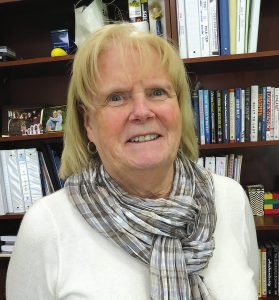
















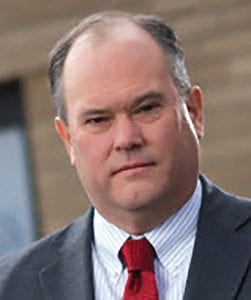

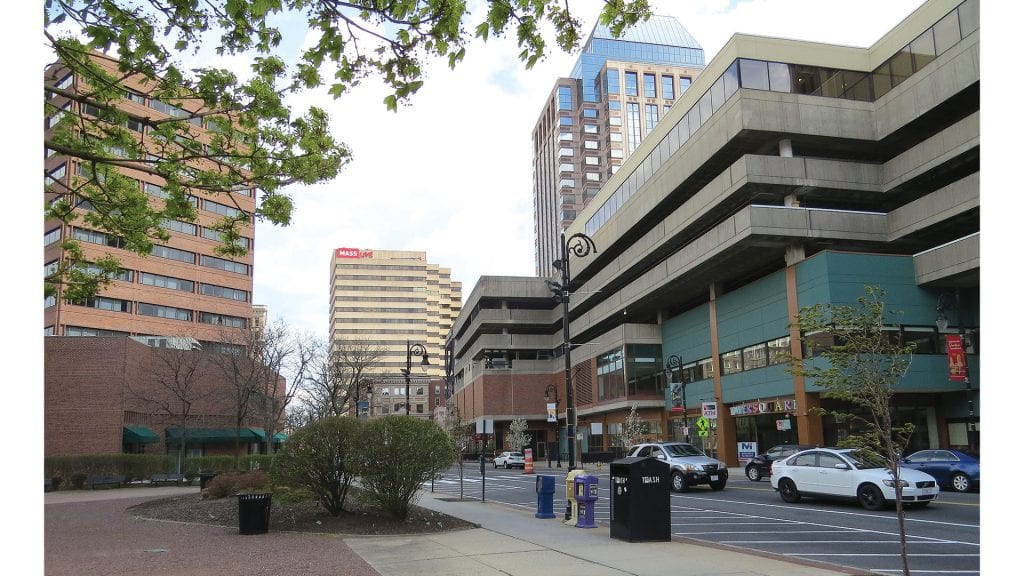
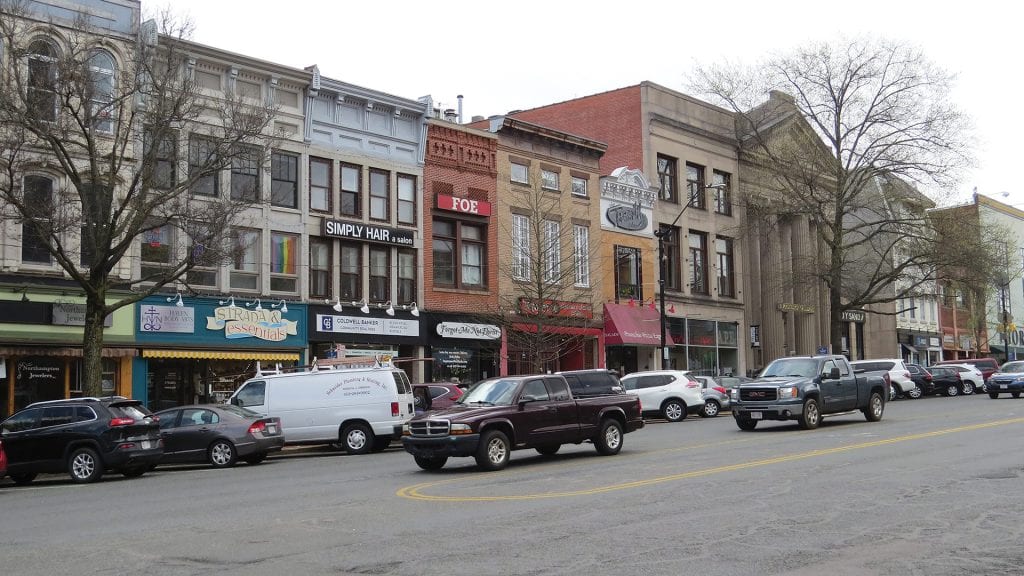

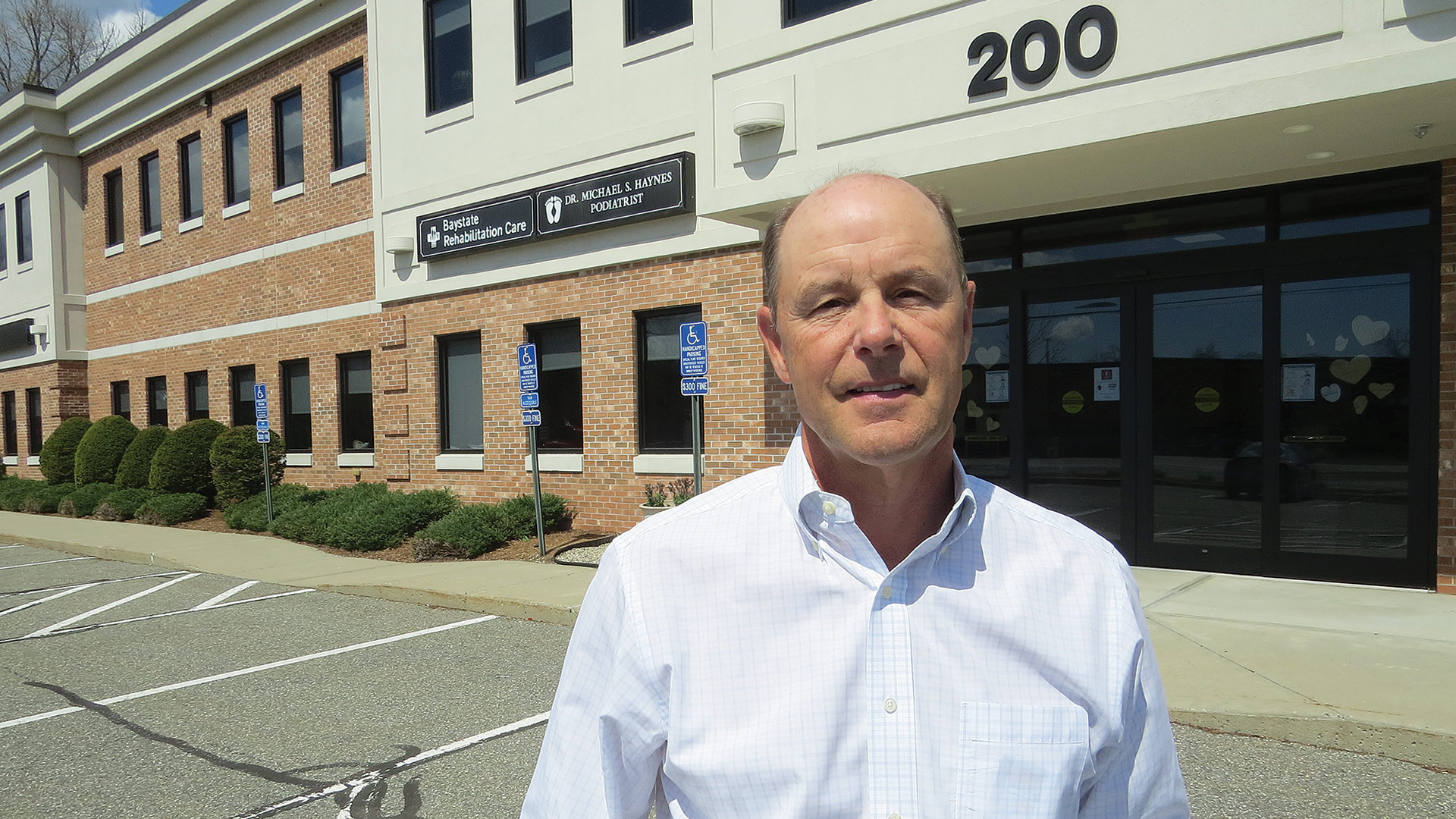
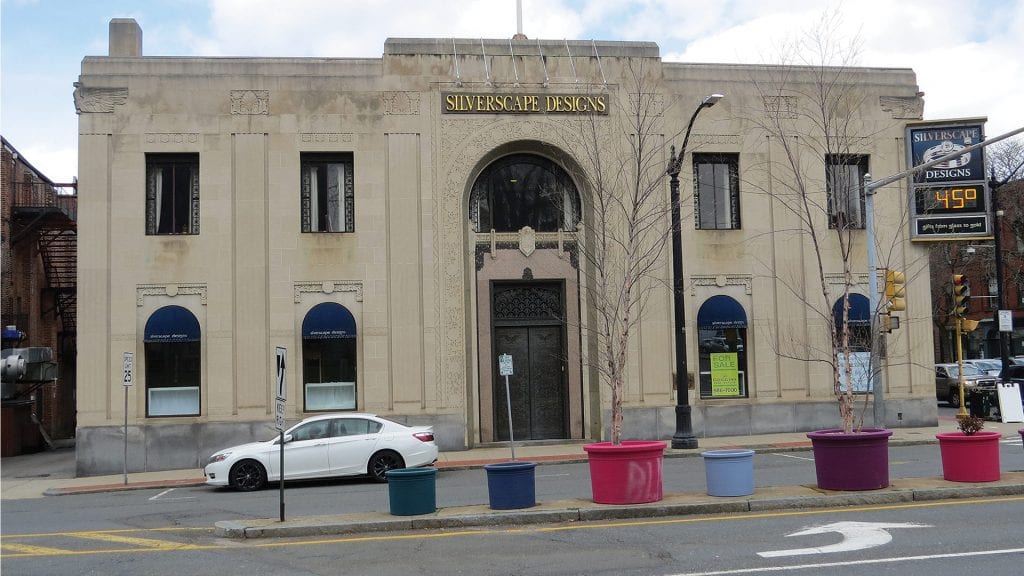




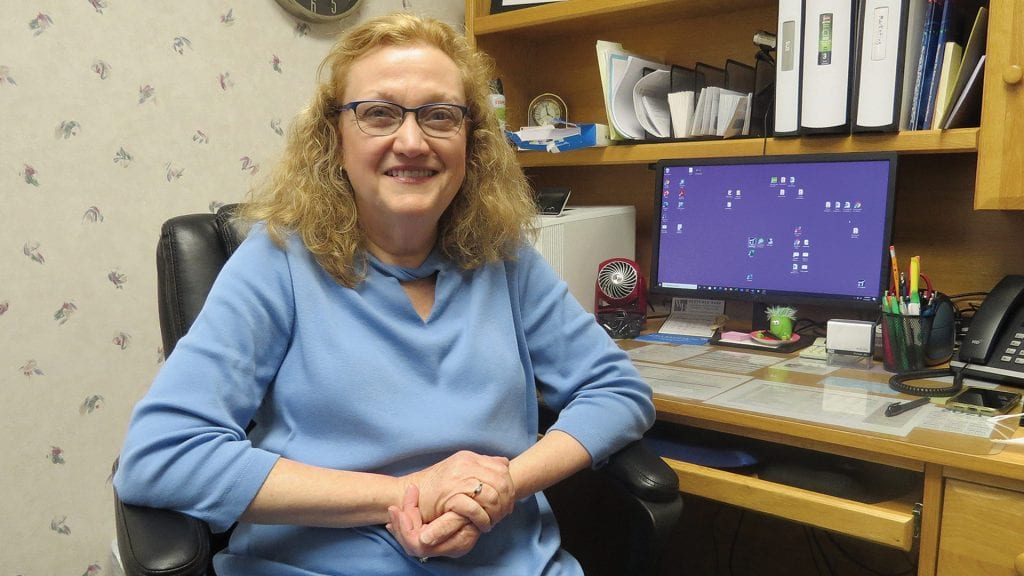
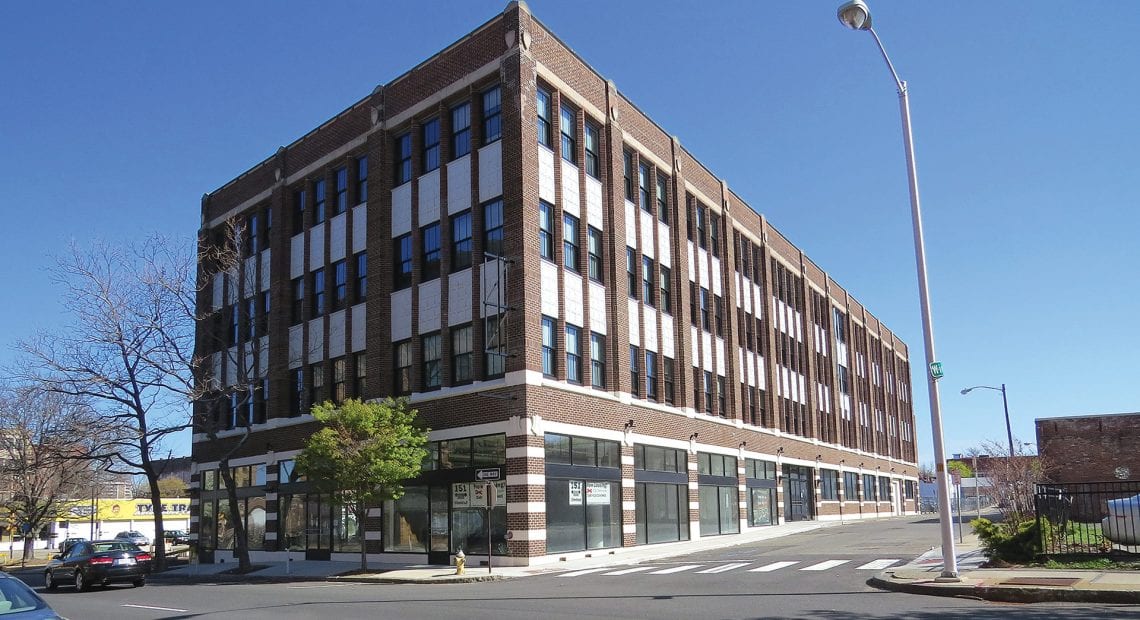


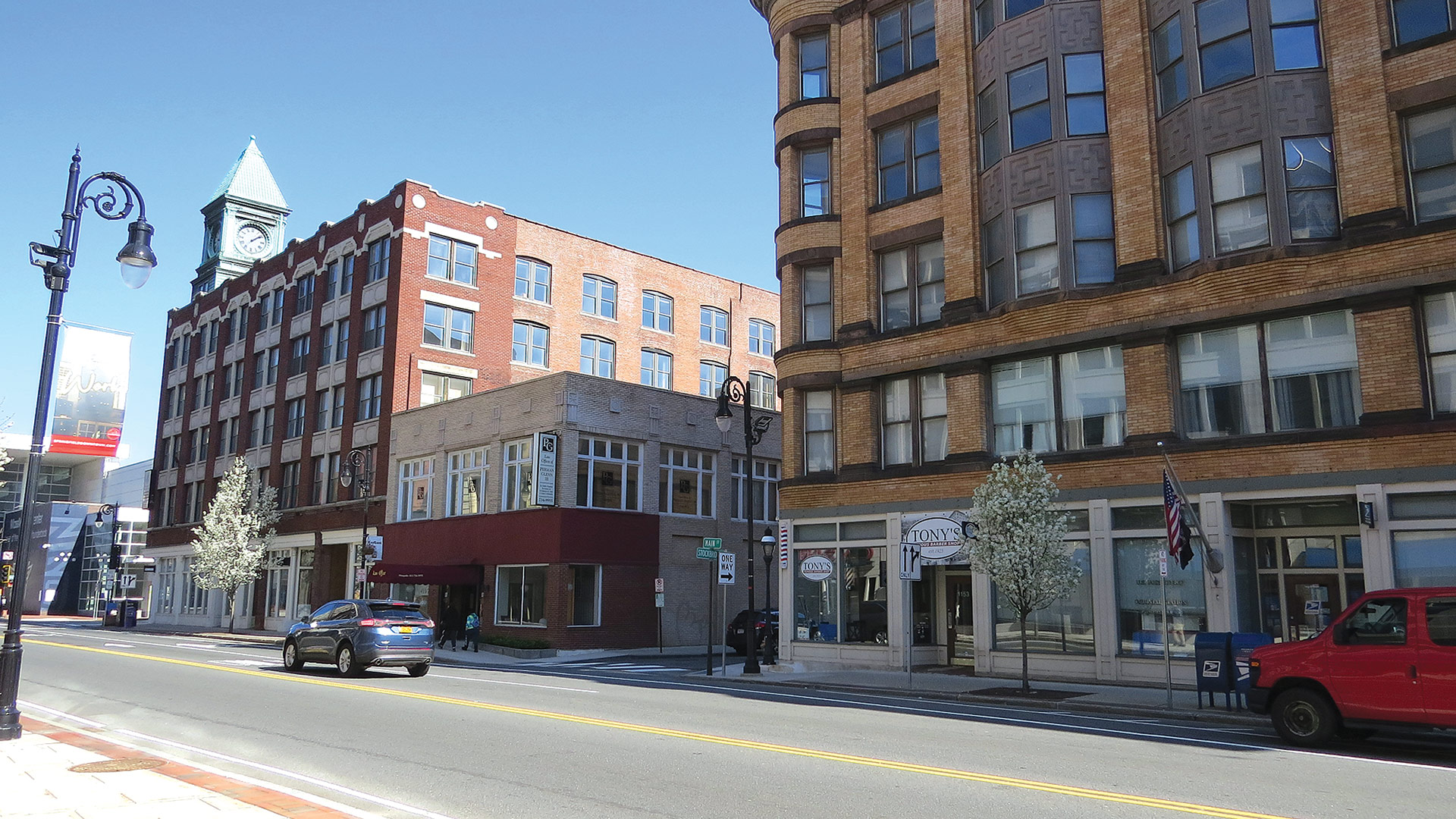






 “What makes LinkedIn even more powerful is that users update their bios regularly, so the connections you are potentially requesting are in the roles they have listed on their bios.”
“What makes LinkedIn even more powerful is that users update their bios regularly, so the connections you are potentially requesting are in the roles they have listed on their bios.”